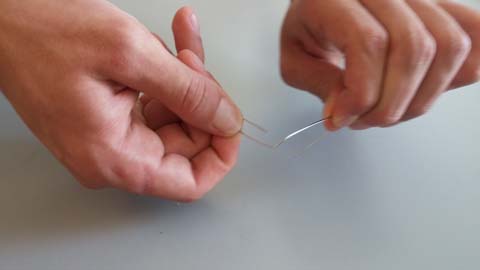Paper Clip Heat
Everyone knows you can rub your hands together on a cold day to generate a little extra heat with the power of friction, but there are other ways to convert mechanical energy into thermal energy—in this experiment, we'll learn about the structure of metals, and how to create a surprising amount of heat with a very simple tool.
What you'll need:
- A paper clip—that's it!
What to Do
Start by unfolding your paper clip. It doesn't have to be perfectly straight—the bends in it will actually make this experiment easier. Grab the clip on either side of one of these bends, and start flexing the metal back and forth so that it bends in the same spot each time—we'll call this spot the flex point. After you bend it back and forth about five times, touch the flex point with your fingertip—it should be slightly warm! If you can't tell, try doing it again and touching the flex point to your lip—your lips are much more sensitive to temperature than your fingers. If you compare the temperature of the flex point to the temperature of the metal elsewhere on the paper clip, there should be a very noticeable difference.

What's Going On?
At a microscopic level, metals like the iron in your paper clip look a little like a 3D grid, with an iron atom at each of the points where two lines meet—we call this structure a lattice. When you bend the paper clip back and forth, you're creating strain in this lattice, pushing some of the atoms closer together while others get pulled further apart.
How does this generate heat? Remember that temperature is just a measure of the vibrational energy in a collection of molecules. When those iron atoms get pushed together, they don't stay there—they repel one another thanks to the positive charges of their nuclei, and then they bounce back, repelled by the other nuclei around them. Flexing the paper clip back and forth is like jumping on a bed: thanks to the "springy" repulsive nature of the atomic lattice, warping it produces vibrations that reverberate through the rest of the nearby structure, and it's these vibrations that we feel as heat.
Apply It!
After about a dozen flexes back and forth, the paper clip starts to weaken and eventually break at the flex point. Why do you think this is? Keep in mind what we've learned about lattices.
-Stephen Skolnick














